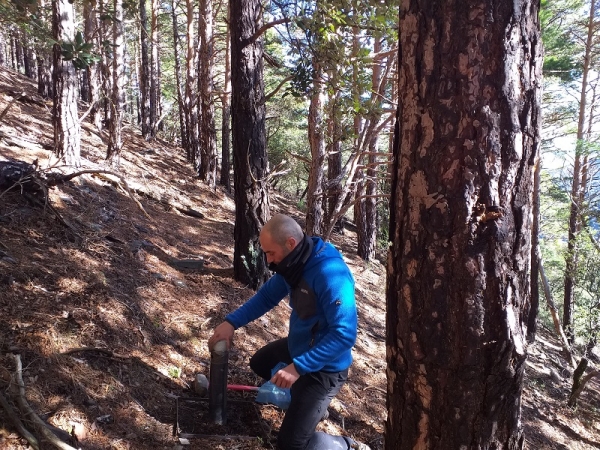Forests, and vegetation in general, have the capacity to absorb CO2 present in the atmosphere, thus reducing the presence of this greenhouse gas. This is known as carbon sequestration. If trees help reverse the effects of global warming, it wouldseem logical to conclude that the more trees, the better, in terms of CO2reduction. However, research published in the journal Forests, and involving researchers with the Agricultural and Forestry Systems Evaluation and Restoration (ERSAF) group at the University of Cordoba, has shown that thinning (reducing the number of trees in forests) actuallyhelps to increase carbon sequestration and improve adaptation to climate change.
To carry out the study, ERSAF researchers coordinated a nationwide study using the Silvadapt project's Adaptive Silviculture Plot Network. This network conducted thinning trials with two intensities (light and heavy) in the reforestations of three Mediterranean pine species: Scots pine, bristlecone pine and Aleppo pine, located along the Spanish Mediterranean Arc.
In 2021 all the measurements from each of the plots were integrated, including biomass and soil organic carbon data, to study the temporal change in carbon sequestration capacity according to the different types of thinning carried out.
With all this data, the research team was able to determine the carbon content present both in the trees' structures and in the soil, finding that plots subjected to higher- intensity thinning (a greater reduction in forest thickness) sequestered more carbon. Thus, "thinning helps pine forests to adapt to climate change by optimizing forest growth, as well as favoring a greater incorporation of organic matter into the soil, which increases ′carbon storage′ in the forests," said Antonio Cachinero Vivar, a researcher with the UCO's ERSAF group.
These results were accorded withthe findings of previous studies based on dendrochronology (measurement of the width of tree rings), which had already shown greater growth associated with a reduction in forest density, suggestingthat in the years after thinning the remaining trees have access to a greater availability of resources,due to reduced competition, and that with this increase in resources,they grow more and can sequester more carbon.
The study, which was carried out within the framework of the Silvadapt network, which includes 14 Spanish universities and research centers, has helped to spotlight the importance of adaptive forestry in increasing the resilience of forests and its contribution to mitigating the effects of climate change.
Reference:
Rafael M. Navarro-Cerrillo, Francisco J. Ruiz-Gómez, Jesús J. Camarero, Víctor Castillo, Gonzalo G. Barbera, Guillermo Palacios Rodríguez, Francisco B. Navarro, Juan A. Blanco, Juan B. Imbert, Antonio M. Cachinero-Vivar, Antonio J. Molina, and Antonio D. del Campo, "Long-Term Carbon Sequestration in Pine Forests under Different Silvicultural and Climatic Regimes in Spain," Forests 2022, 13(3), 450; https://doi.org/10.3390/f13030450.


